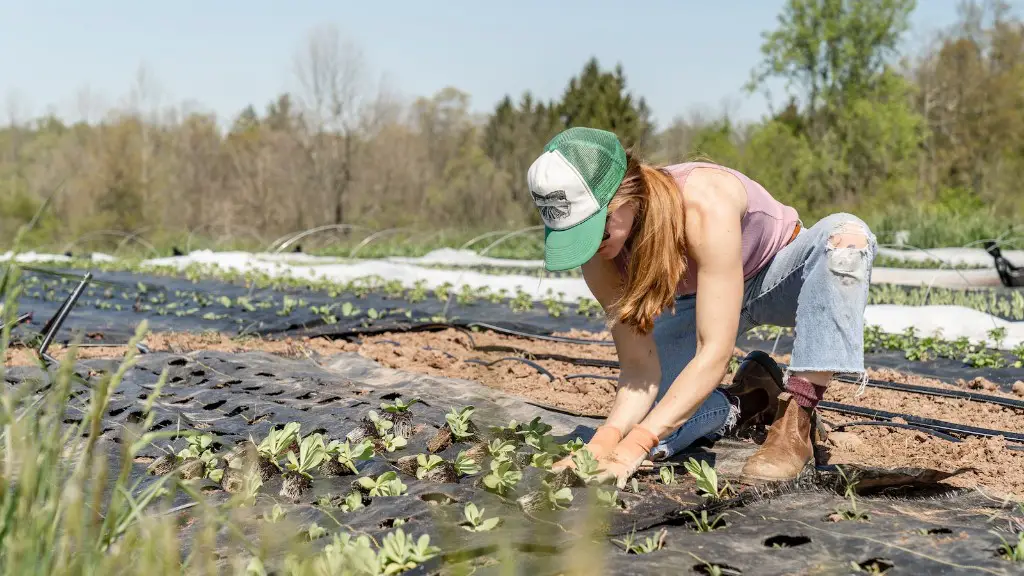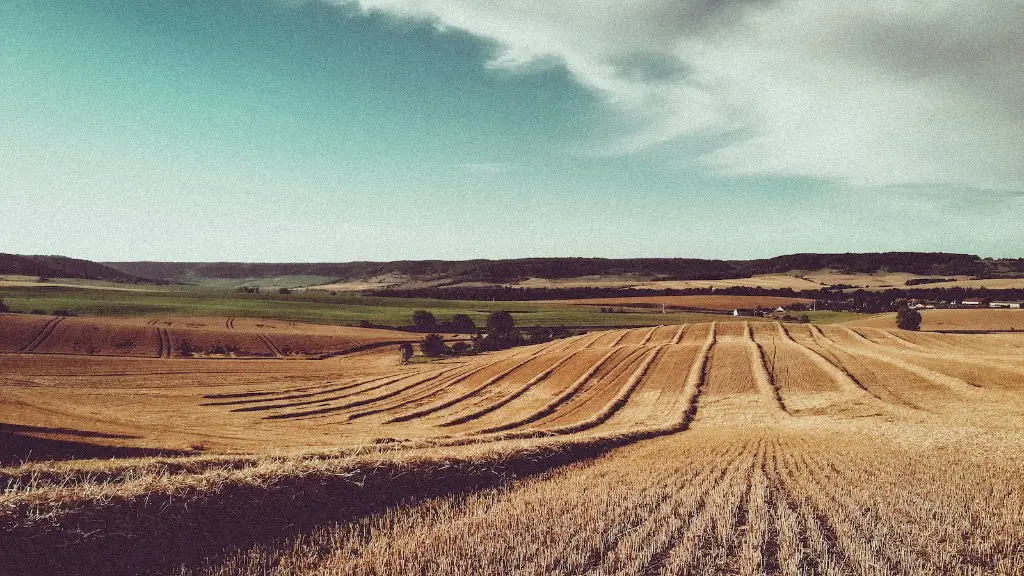The Green Revolution was a period of time in India when agriculture changed to become more efficient. This change meant that India was able to produce more food with fewer inputs. The Green Revolution led to an increase in production of food grains by 5 times between the years 1950-1985. India went from being a food-deficient country to a food-surplus country. The Green Revolution also resulted in increased employment in the agricultural sector and rural areas.
The Green Revolution led to increased use of technological advances in agriculture, including the use of pesticides and herbicides, as well as improved breeding of crops to make them more resistant to pests and droughts. These changes increased production of crops, particularly in areas that had been traditionally less productive.
Did India benefit from the green revolution?
The green revolution in India was a period of time where there were improved returns to crop improvement research. This also prevented the conversion of thousands of hectares of land for agriculture. This helped India move from a state of importing grains to a state of self-sufficiency.
The Green Revolution of the 1970s led to a dramatic increase in food production in India, particularly in wheat and rice. This was made possible by the use of high-yielding varieties of seeds, irrigation, chemical fertilisers, insecticides, and pesticides. The Green Revolution had a profound impact on Indian agriculture, and continues to do so today. It has helped to make India self-sufficient in food production, and has lifted millions of people out of poverty.
What was the impact of Green Revolution on Indian economy
The Green Revolution in India led to a tremendous increase in crop production, resulting in a grain output of 131 million tonnes in the year 1978-79. This made India one of the world’s biggest agricultural producers. The crop area under high yielding varieties of wheat and rice grew considerably during the Green Revolution. This increase in production helped to meet the growing demand for food in the country and also improved the livelihoods of farmers.
The green revolution was a period of time where the production of cereal crops tripled with only a 30% increase in the land area cultivated. This came true all over the world, with a few exceptions. In addition, there were significant impacts on poverty reduction and lower food prices.
What are the positive and negative impact of Green Revolution in India?
The Green Revolution was a period of time in which food production was increased in Asia. This was done by introducing more productive dwarf varieties of wheat and rice. This had a positive impact on food production, as it allowed for more food to be produced. However, by the 1960s, India was facing a severe deficit of food grains. This situation was saved by the Green Revolution, which allowed for more food to be produced.
The main features of Green Revolution in India are:
– Introduction of new and high yielding variety of seeds
– Increased use of fertilizers, pesticides and weedicides in order to reduce agricultural loses
– Increased application of fertilizers in order to enhance agricultural productivity
– Use of improved irrigation facilities to ensure better water management
– Development of infrastructure facilities like storage, transportation and marketing of agricultural produce
What were the benefits of the green revolution in India quizlet?
The Green Revolution has been a boon for India, helping to increase the production of food staples like rice, wheat, and other cereal grains at a rate that has been able to keep up with population growth. This has been a crucial force in helping to improve the standard of living for millions of people in India.
The Green Revolution in India was a period of time when new agricultural techniques were introduced in order to increase food production. While this was successful in feeding the country’s growing population, the methods used had a negative impact on the soil. Nutrients were depleted from the soil and not restored, as a result of indiscriminate fertilizer application and continuous cultivation of the same crops. This has led to soil degradation and a decline in agricultural productivity in recent years.
What were the four negative impacts of Green Revolution on Indian agriculture
The green revolution was a period of intense agricultural productivity in the late 1960s and 1970s. It was fueled by the introduction of new irrigation, pesticides, and herbicides, as well as the development of new hybrid crops.
While the green revolution did increase agricultural production, it also had a number of negative impacts. These included the loss of soil nutrients, the large-scale use of pesticides, unsustainable practices for getting more yield, increased rates of suicide, and more.
The green revolution led to an increase in food production and a better standard of living for farmers. However, there is a dark side to this development. Our institutional and political dispensation failed miserably, leading to the current farmer distress. The government failed to provide adequate support to farmers, leading to a decline in agricultural productivity. In addition, the government failed to provide adequate credit and marketing facilities to farmers, leading to a further decline in their standard of living.
What was the conclusion of green revolution in India?
The Green Revolution in India has been an incredible success. It has provided food security for millions of people and lifted many out of poverty. It is one of the most significant achievements in recent history.
The Green Revolution was a period of time where agricultural production increased in most countries. However, the Green Revolution had some negative impacts on the environment, such as deforestation, land degradation, loss of biodiversity, and increased greenhouse gas emissions.
What are the 3 benefits of green agriculture
Sustainable agriculture is a type of farming that focuses on producing food in a way that is environmentally sustainable. This means using methods that protect the environment, while still being able to produce enough food to meet the demand.
The advantages of sustainable agriculture include the protection of the environment, the reduction of erosion and natural resource degradation, the improvement of air and water quality, the increase in biodiversity, and the decrease in carbon emissions.
Overall, these efforts benefited virtually all consumers in the world and the poor relatively more so, because they spend a greater share of their income on food. This is a good thing, as it means that the poor are less likely to go hungry and will be able to afford more nutritious food. However, it is worth noting that the effects of these efforts are not evenly distributed among all consumers. Some groups, such as the very poor, still struggle to access sufficient food.
What are the three advantage of Green Revolution?
With the increasing demand for food, deforestation also increases. To meet food needs and increase afforestation, a green revolution is required. It offers a constant yield of crops irrespective of seasons.
The African Green Revolution was a series of initiatives designed to boost agriculture production on the continent. However, it was ultimately unsuccessful due to a number of factors, including poor infrastructure, high transport costs, limited investment in irrigation, and pricing and marketing policies that penalized farmers. As a result, many African countries are still struggling to increase food production and improve food security.
Final Words
The changes that the Green Revolution brought to Indian agriculture were an increase in the use of technology and improved irrigation practices. This allowed for higher yields and increased production.
The green revolution was a major turning point for Indian agriculture, bringing about new methods and technologies that greatly increased crop yields. While it has had some negative environmental impacts, overall the green revolution has been a positive force for Indian agriculture, helping to feed a growing population and improve rural livelihoods.





